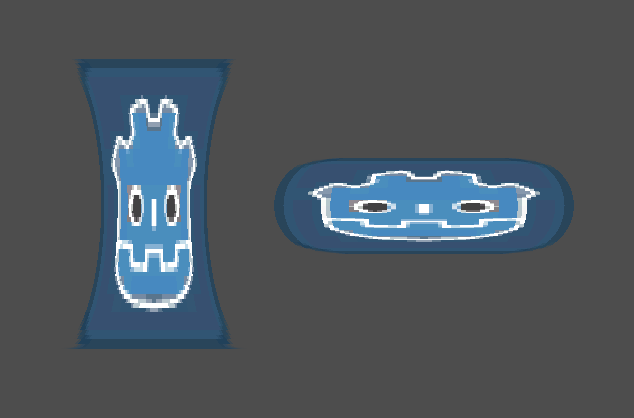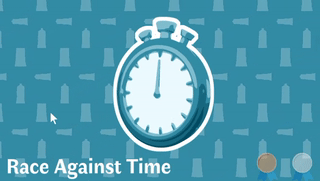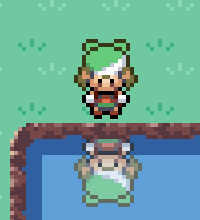Squish Sprite
Allows you to squish or stretch a sprite according to some function (current default is a square root function).
The code is documented as to serve as a learning resource. Further optimization can be done (including removing the optional UV debug mode and extra if-statements).
Example scenes can be found at my GitHub.
Shader code
/*
Squish Sprite Shader by Garmelon (https://github.com/Garmelon)
Documented by Mateus-Carmo31
*/
shader_type canvas_item;
uniform bool uv_mode = false;
uniform float x_factor = 2.0;
uniform float bulge : hint_range(-1,1);
void vertex()
{
// Stretches the sprite along the x axis by the x_factor.
// This essentially increases the bounds in which the sprite can be drawn,
// allowing the sprite to bulge outwards appropriately.
VERTEX.x *= x_factor;
}
// Describes how the sprite bulges. Right now, it's a simple half-circle function.
// Changing it modifies how the bulges will look like.
// Must be a function in which the x will be between 0 and 1 for y between -1 and 1.
float bulge_function(float y)
{
return sqrt(1.0 - y*y);
}
void fragment()
{
// Remaps the UV (normally from 0.0 to 1.0) to go from -1.0 to 1.0
vec2 uv = UV * 2.0 - 1.0;
// Counteracts the vertex stretch by increasing the uv by the same factor
// (Since textures are mapped from 0 to 1, multiplying the UV will make
// it go from 0 to something else, and the texture will remain between 0 and 1.
// this results in it becoming smaller)
uv.x *= x_factor;
/* The main meat of the shader.
Calculates a displacement using the bulge factor and the function,
then divides the x by it.
If the displacement is larger than 1, the uv.x will become smaller, and, in
the process, when the uv is used for sampling, a pixel more towards the
middle of the texture will be sampled instead. This causes far UV values to
now be able to have a correspondent pixel in the [-1, 1] range (that will
be unmapped back to [0,1] later), "pulling out" the OG texture.
An inverted process occurs with displacement smaller than 1:
uv.x becomes larger -> pixels move away from middle ->
inner values sample from farther away -> texture gets "pulled in"
This also has the bonus of causing certain pixels to sample values 1,
which will be caught by the if statement below and be rendered transparent.
Remember as well that the x factor causes the UV to go from -2 to 2 on the x
axis.
*/
float displacement = 1.0 + bulge * bulge_function(uv.y);
uv.x /= displacement;
// Undoes the remapping we did at the beginning
uv = (uv + 1.0) / 2.0;
// Draws the uv instead of the texture (for debugging)
if(uv_mode)
{
COLOR = uv.x >= 0.0 && uv.x <= 1.0 ? vec4(uv, 0.0, 1.0) : vec4(vec3(0.0), 1.0);
}
// Checks for uv values outside the texture, and draws them as transparent,
// allowing the "indentation" effect when bulge = 0.0 && uv.x <= 1.0)
{
COLOR = texture(TEXTURE, uv);
}
else
{
COLOR = vec4(0.0);
}
}





Good shader I use it in my platformer prototype, thanks for sharing!
Hi, I’m using Godot 3.3 rc6 And its giving me this error -> https://imgur.com/UcpEABb
For people with a error :
replace the end bit with this
else if(uv.x >= 0.0 && uv.x <= 1.0) { COLOR = texture(TEXTURE, uv); } else { COLOR = vec4(0.0); } }